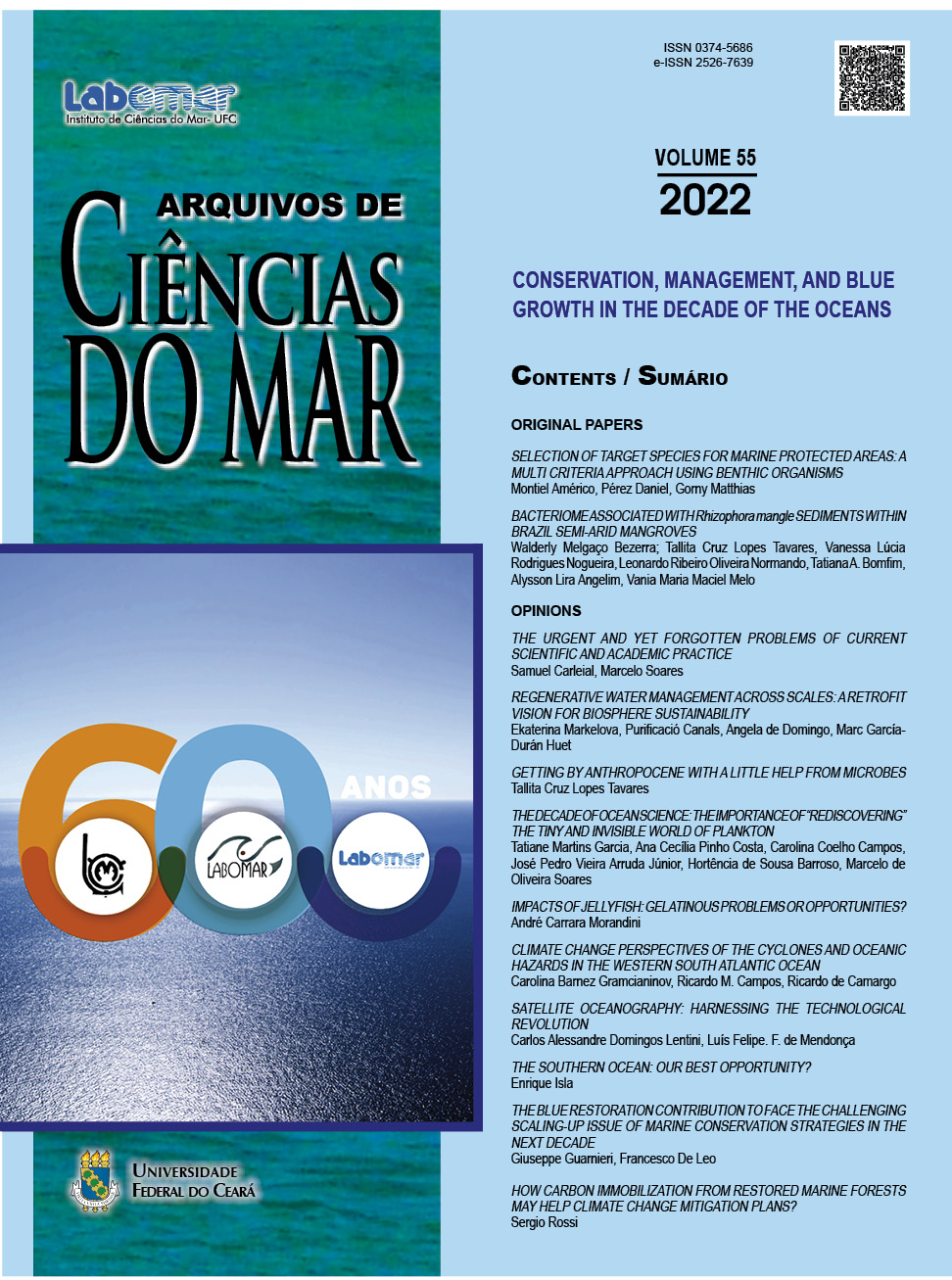SATELLITE OCEANOGRAPHY: HARNESSING THE TECHNOLOGICAL REVOLUTION
Oceanografia por satélites: aproveitando a revolução tecnológic
DOI:
https://doi.org/10.32360/acmar.v55iEspecial.78516Abstract
In 43 years since the first civilian ocean satellite, the Seasat, observations of the world’s oceans have progressed a lot. From color photographies taken by US astronauts during the first manned spaceflight programs back in the 60s to nano and picosatellites nowadays, Satellite Oceanography (SO) has allowed near real-time support capabilities for operational Oceanography and climate change studies. These outcomes can improve and contribute to the growth of the blue economy local, national and international by limiting the negative impact of climate change and the potential risks for aquaculture, fisheries, and
environmental protection. Moreover, SO increases maritime situational awareness and surveillance for civilian purposes, accessing shipping routes, tracking illegal activities, and piracy. Therefore, the objective of this manuscript is to share some of the historical technical facts and needs that push SO observations and sensors forward to understanding our oceans and how they interact with our planet.
Keywords: Nasa, Seasat, NOAA TIROS-N, Swot, CubeSats
Downloads
Published
Issue
Section
License
1. Proposta de Política para Periódicos de Acesso Livre
Autores que publicam nesta revista concordam com os seguintes termos:
- Autores mantém os direitos autorais e concedem à revista o direito de primeira publicação, com o trabalho simultaneamente licenciado sob a Licença Creative Commons Attribution que permite o compartilhamento do trabalho com reconhecimento da autoria e publicação inicial nesta revista.
- Autores têm autorização para assumir contratos adicionais separadamente, para distribuição não-exclusiva da versão do trabalho publicada nesta revista (ex.: publicar em repositório institucional ou como capítulo de livro), com reconhecimento de autoria e publicação inicial nesta revista.
- Autores têm permissão e são estimulados a publicar e distribuir seu trabalho online (ex.: em repositórios institucionais ou na sua página pessoal) a qualquer ponto antes ou durante o processo editorial, já que isso pode gerar alterações produtivas, bem como aumentar o impacto e a citação do trabalho publicado (Veja O Efeito do Acesso Livre).

